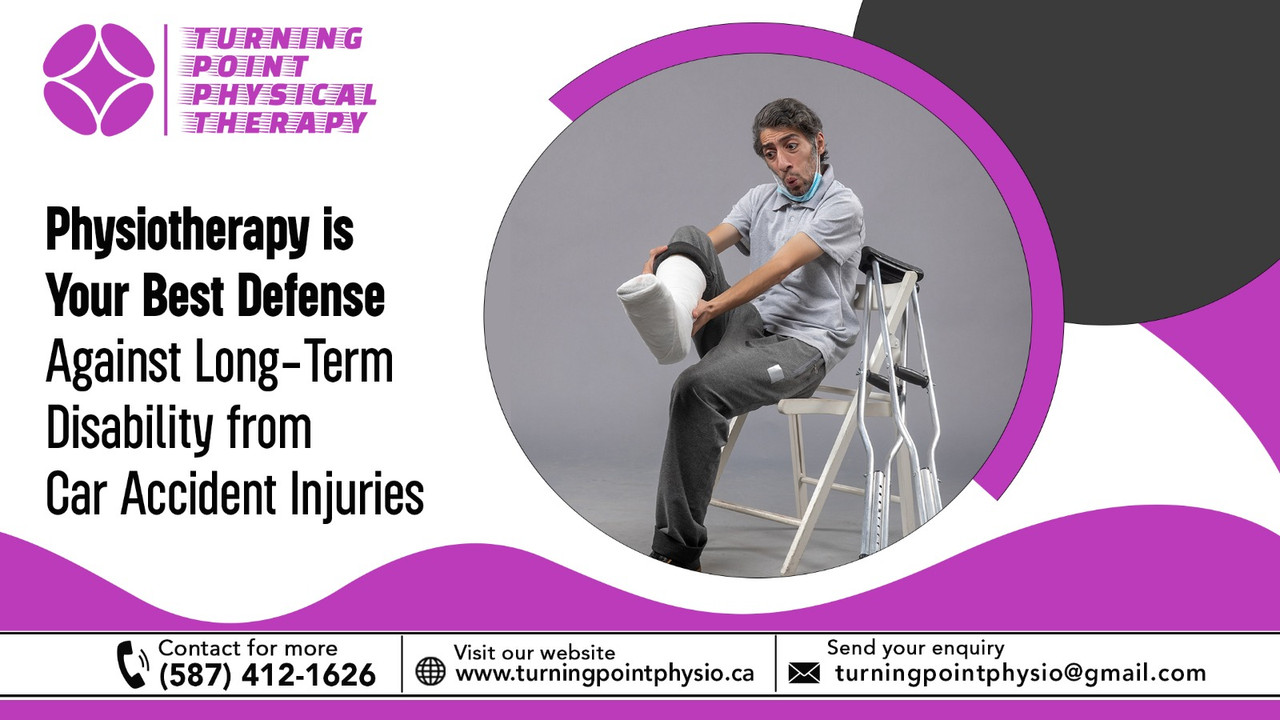Car accidents leading to severe injuries might evolve into long-term disabilities if not properly addressed. In Edmonton, engaging in motor vehicle accident physiotherapy soon after an incident is crucial for preventing lasting physical damage. This specialized form of therapy, also known as MVA physiotherapy, focuses on mitigating the effects of traumatic injuries through tailored rehabilitation programs. By utilizing motor vehicle accident physiotherapy in Edmonton, individuals can be sure that they are taking proactive steps toward maintaining their mobility in the aftermath of an accident.
The first step in treating long-term disability following a motor vehicle accident involves a thorough assessment. This assessment evaluates the extent of the injuries, the level of physical function, and the overall impact on the patient’s daily life.
Here’s an in-depth look at the techniques used to treat long-term disabilities resulting from car accident injuries.
Pain Management Techniques
Electrotherapy: Techniques such as TENS (Transcutaneous Electrical Nerve Stimulation) and ultrasound therapy manage chronic pain. These methods can help modulate pain signals and promote muscle relaxation and healing at the cellular level.
Heat and Cold Therapy: Heat will help relax and loosen tissues and improve blood flow to the affected areas, while cold therapy will reduce inflammation and numb sore tissues, relieving pain.
Manual Therapy Techniques
Joint Mobilization and Manipulation
Enhancing Joint Function: Joint mobilization involves the passive movement of skeletal joints to increase the range of motion and reduce pain. This gentle technique involves the joint’s slow stretching or rhythmic movements within or at the limit of its range. It is particularly effective for restoring mobility to stiff joints that have lost their normal function due to an accident.
Manipulation Techniques: Manipulation is a more aggressive form of manual therapy involving quick but precise joint adjustments. This can often result in an audible ‘pop’ as the joint’s natural movement is restored. This technique alleviates pain immediately and restores fuller function by realigning the joints and reducing pressure on surrounding nerves.
Soft Tissue Massage
Relieving Muscle Tension: Soft tissue massage targets the muscles, tendons, and ligaments affected by an injury. It breaks down adhesions and scar tissue that typically form following trauma. By massaging the affected areas, therapists can promote the relaxation of tight muscles, which helps to alleviate pain and reduce muscle spasticity.
Promoting Tissue Healing: Massage therapy enhances blood circulation to the injured areas, crucial for bringing nutrients and oxygen that speed up the healing process. Improved circulation also helps flush waste products and reduce swelling, thereby speeding up recovery.
Specialized Exercise Programs
Strengthening Exercises
Building Muscle Support: Strengthening exercises are critical after an injury to rebuild muscle strength and support weakened joints. Physiotherapists design personalized exercise routines targeting specific muscle groups the injury affects. These exercises often use resistance bands, weights, or the patient’s body weight to rebuild muscle strength and endurance gradually.
Flexibility and Stretching Exercises
Improving Elasticity and Mobility: After an injury, muscles and tendons can become tight and lose their elasticity, restricting movement and leading to pain. Stretching exercises are integral to any rehabilitation program, restoring and improving muscle and joint flexibility. Techniques such as static, dynamic, and proprioceptive neuromuscular facilitation (PNF) are commonly used.
Functional and Adaptive Exercises
Restoring Daily Function: Functional exercises mimic activities of daily living or specific tasks that a patient needs to perform at home or work. These exercises help patients regain their independence by improving their strength, balance, and mobility in a controlled and progressive manner.
Adaptive Strategies: Adaptive exercises and modifications are provided for patients facing long-term impairments to help them navigate their environments safely. This might include training with assistive devices or altering how certain activities are performed to ensure safety and minimize re-injury risk.
Neurological Rehabilitation
Balance and Coordination Training
Neurological damage caused by a motor vehicle accident may cause patients to experience impairments in balance and coordination. These impairments can significantly affect their ability to perform daily activities safely and independently.
- Static Balance Exercises: Patients perform tasks while standing still, such as standing on one foot or maintaining balance on an unstable surface like a balance board.
- Dynamic Balance Exercises: These involve maintaining stability while moving. Activities could include walking along a straight line, stepping over obstacles, or navigating through complex environments requiring speed and direction changes.
- Coordination Drills: Exercises that require precise movements, such as catching and throwing balls, complex arm or leg movements, or dual-tasking activities where the patient must perform cognitive tasks while engaging in physical movements.
Proprioceptive Training
Enhancing Body Awareness: Proprioception is the body’s ability to perceive its position in space, which is important for coordinating movements accurately. However, after neurological impairments, this sense may be diminished, making it difficult for patients to perform movements without looking at the limbs or to judge their position relative to other objects.
Exercises designed to enhance proprioception might include:
- Closed-Eye Exercises: Performing balance and coordination tasks without visual input forces reliance on proprioceptive and vestibular inputs, strengthening the body’s internal awareness.
- Sensory Integration Exercises: Activities that integrate touch, pressure, and movement feedback, such as walking on different textures or manipulating objects with various shapes and sizes without direct visual guidance.
- Joint Position Sense Drills: These involve the therapist moving a limb into various positions, and the patient, with their eyes closed, has to mimic the position with the opposite limb or describe the angle of the joint bend.
Take Control of Your Recovery Journey
Turning Point Physiotherapy in Edmonton is your dedicated partner in combating the potential long-term effects of car accident injuries through expert motor vehicle accident physiotherapy. Our specialized car accident physiotherapy is designed to support your recovery process, helping you regain strength and functionality while minimizing the risk of disability.
At Turning Point Physiotherapy, we understand the critical nature of timely and effective treatment. Contact us today and take the first step towards a faster, more effective rehabilitation through motor vehicle accident physiotherapy in Edmonton.

